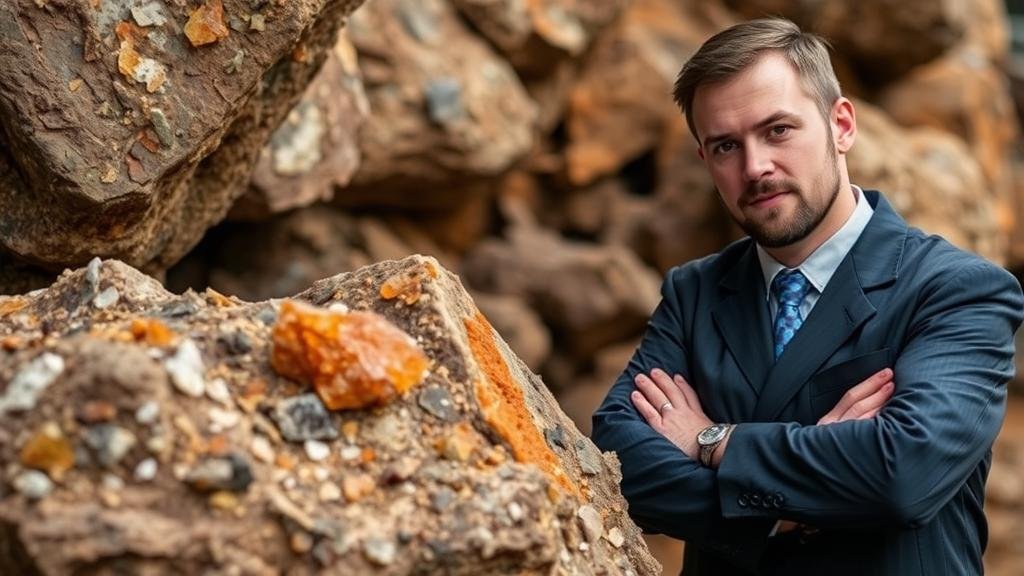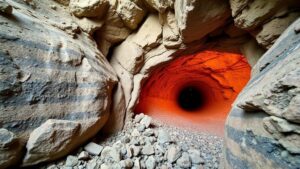The Basics of Identifying Ore Minerals in Hard Rock Mining
The Basics of Identifying Ore Minerals in Hard Rock Mining
Identifying ore minerals in hard rock mining is a fundamental aspect of resource extraction that significantly impacts operational efficiency and economic viability. This article will provide a comprehensive overview of ore mineral identification, covering key concepts, methods, and practical applications in the mining industry.
Understanding Ore Minerals
Ore minerals are naturally occurring solid materials from which metals and other valuable minerals can be economically extracted. They differ from gangue minerals, which do not contain significant amounts of valuable resources. Common ore minerals include:
- Gold (Au) – often found as native gold or in tellurides
- Copper (Cu) – prevalent in chalcopyrite and bornite
- Iron (Fe) – extracted from magnetite and hematite
- Silver (Ag) – typically located in argentite or native silver
Understanding the composition and formation of these minerals is crucial for effective identification in the field.
Geological Context and Mineral Formation
Ore minerals form in a variety of geological environments, which can include igneous, sedimentary, and metamorphic processes. For example, hydrothermal processes are a leading means of ore formation, where mineral-rich fluids circulate through cracks and fissures in rocks, depositing minerals as they cool. This geological context influences which minerals are present and requires miners to adapt their identification techniques accordingly.
Techniques for Identifying Ore Minerals
Field Methods
Fieldwork is often the first step in identifying ore minerals. Geologists and miners employ various methods, including:
- Hand Sample Examination: Using a hand lens to inspect rock samples for color, texture, and mineral associations.
- Geochemical Analysis: Collecting soil and rock samples for laboratory tests to detect trace elements indicative of ore deposits.
For example, the presence of copper oxides like malachite can signal nearby chalcopyrite deposits.
Laboratory Techniques
Once samples are collected, laboratory analysis plays a crucial role in the identification process. Common techniques include:
- Thin Section Petrography: This involves slicing samples to create thin sections for microscopic examination, allowing identification of mineral composition and relationships.
- X-Ray Diffraction (XRD): A method that provides precise mineral identification based on the unique crystal structures of minerals.
- Scanning Electron Microscopy (SEM): Used for high-resolution imaging and chemical analysis at the microscopic level, ideal for identifying complex minerals.
These laboratory methods enhance understanding of mineral properties, such as hardness and luster, and facilitate accurate identification.
Understanding Economic Significance
The ability to accurately identify ore minerals is critical for assessing the economic value of mining projects. For example, the economic feasibility of a copper mine depends significantly on the concentration of copper-bearing minerals, often expressed in percent copper content. A deposit with 1% copper content may still be economically viable, while less than 0.5% typically is not.
Case Study: The Grasberg Mine
The Grasberg mine in Indonesia is one of the largest gold and copper mines in the world. By employing advanced identification techniques, including geochemical assays and extensive geological mapping, operators have successfully located vast reserves of ore minerals, enabling efficient resource extraction. The ores average grade of 1.1% copper and 0.5 grams per tonne of gold has made Grasberg an economic powerhouse in the mining sector.
Challenges in Ore Mineral Identification
While the methods available for identifying ore minerals are sophisticated, challenges remain. Potential issues include:
- Complex Mineralogy: Many ore deposits consist of multiple minerals, making identification challenging without advanced technology.
- Environmental Considerations: Modern practices must take environmental impact into account, mandating careful handling and processing of samples.
Addressing these challenges requires continuous research and the adoption of innovative techniques, further contributing to advancements in the mining field.
Conclusion and Takeaways
Identifying ore minerals in hard rock mining is an intricate process that necessitates a thorough understanding of geology, reliable field methods, and sophisticated laboratory techniques. By establishing clear methodologies and continuously improving technologies, mining operations can optimize mineral extraction strategies to ensure economic success. As the industry evolves, staying abreast of best practices in ore identification will be integral to meeting resource demands efficiently and sustainably.
In practice, it is advisable for miners and geologists to:
- Use a combination of field and laboratory techniques to confirm mineral identification.
- Stay informed about the latest technologies in mineral analysis to continually improve assessment methods.
- Consider environmental guidelines and regulations as integral to the identification process, further ensuring responsible mining practices.



